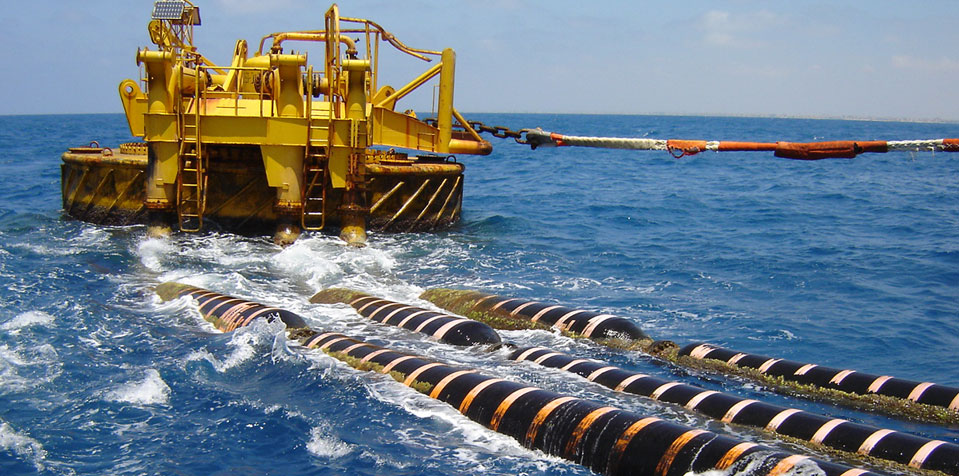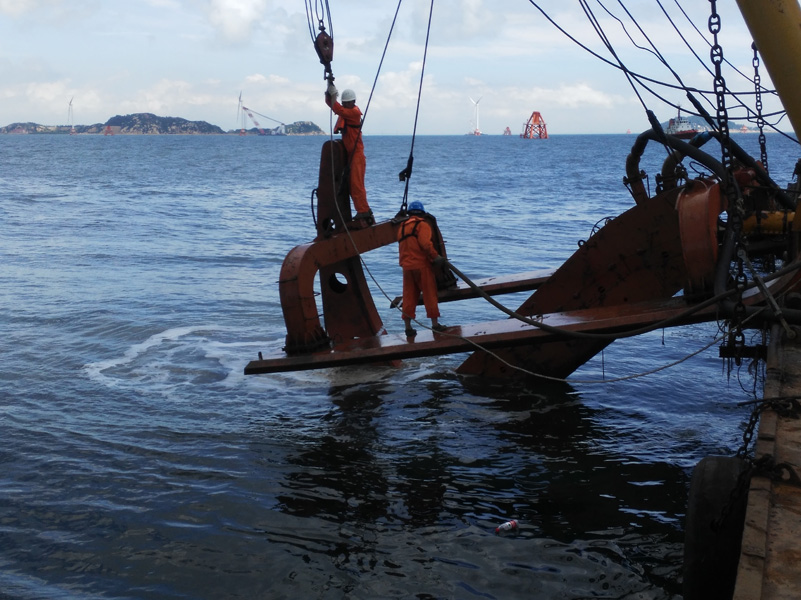
According to Singapore's Campana Mythic, it will start operating the international undersea submarine cable connection from Singapore to Myanmar as the first private submarine cable transmission operator in Myanmar this month.
Nowadays, Singapore's submarine cable has been connected to many regions, such as Hong Kong, China, Japan, and so on.
Myanmar is still a country without high-speed rail and metro. Compared to Singapore, it is still lagging in some aspects of development.
Therefore, this underwater ocean cable connection between Singapore and Myanmar will be a major step forward in the exchange of information between the two countries and a major priority for Myanmar's development.
The laying of submarine cables is not an uncommon occurrence in today's rapidly developing society.
So what exactly is a submarine cable? Why doesn't every country have submarine cables?
Submarine cables are wires wrapped in insulating material and laid underwater on the sea floor and in rivers for telecommunications transmission.
Modern submarine cables use fiber optics as the material to transmit telephone and Internet signals.
Currently, 99% of transoceanic Internet data transmission is carried out via ocean fiber optic cable.
There are 39,000 kilometers of existing submarine cables connecting a total of 33 countries and four continents.
The first submarine cable in the world was laid between England and France in 1850.
Submarine cables are divided into submarine communication cables and submarine power cables.
Submarine communication cables are mainly used for communication operations, which are expensive but have a high degree of confidentiality.
Submarine power cables are mainly used for underwater transmission of high-power electricity, and the role of underground power cables are equivalent, only the application of the occasion and the way of laying different.
As the communication cables in the ocean project is recognized by the world as a complex and difficult large-scale project, from environmental detection, and marine physical survey, as well as the design, manufacture, and installation of the cable, and the application of complex technology.
Submarine cable manufacturers are therefore few in the world, mainly Norway, Denmark, Japan, Canada, the United States, Britain, France, Italy, and other countries, these countries in addition to manufacturing also provide laying technology.
The core of submarine fiber optic cable is made of fine hair-like high-purity optical fiber, which guides the light along the path of the fiber through internal reflection.
The ocean fiber optic also has to be able to withstand the enormous pressure of being 8 kilometers underwater, equivalent to the weight of putting an elephant on a human thumb.
In the production of submarine fiber optic cables, the optical fibers are first embedded in a jelly-like compound that protects the cables from damage even when they are in contact with seawater.
The fiber optic cable is then encased in steel tubing to prevent the pressure of the water from damaging it.
Next, it is wrapped in an overall very strong steel wire and sleeved in a copper tube, and finally, a protective layer of polyethylene material is applied.
Near the coast of the continental shelf, undersea fiber cables are usually laid with lightweight cables with stronger steel wire and covered with an asphalt coating to prevent corrosion from seawater.
Submarine cables can carry up to 80 Tbps of data, equivalent to 4.7 GB of capacity in one second.
Campana Mythic, a Singapore-based international submarine optical cable engineering company operating in Myanmar, said it will begin work on laying the fiber optic cable that will cross Myanmar's offshore waters between January 19 and April.
So how do humans lay cables into the sea floor when the submarine cable is such a difficult project and the sea is so unfathomable?
Submarine cable laying mainly includes cable routing survey and cleaning, undersea optical fiber cable laying, and flush burial protection in three stages.

Cable laying to control the angle of the cable into the water and laying tension by controlling the navigation speed of the laying ship, and cable release speed, to avoid damage to the cable due to too small a bending radius or too much tension.
Among them, when laying in the shallow section, the cable laying vessel stops at a distance of 4.5 km from the shore, tows the cable placed on the floating package through the tractor on shore, and removes the floating package after the cable is onshore so that the cable sinks to the bottom.
When laying the deep-sea section, the cable-laying vessel releases the cable and constantly monitors and adjusts it using underwater monitors and underwater remote control vehicles to control the forward speed and direction of the laying vessel and the speed of laying the cable to avoid damaging the cable by bypassing the uneven places and rocks.
In the final stage of construction, the main purpose is to protect the optic cables under the sea by deep burial to reduce the impact of the complex marine environment on the submarine cable and ensure the safety of operation.
In sandy and silty areas, a trench about 2 meters deep was generated by high-pressure flushing water, into which the cable was buried, and covered by sand and soil next to it.
In coral reef and clay areas, cut a 0.6-1.2 m deep trench with a cutter, bury the cable into the trench and backfill it naturally to form protection.
In the hard rock area, the cable needs to be covered with cement cover and other hard objects to implement protection.
It is reported that the submarine fiber optic cable laying project will be carried out in a special economic zone off the coast of Myanmar, within 200 miles of the Myanmar coastline the waters for the laying of fiber optic cables.
At present, Myanmar authorities have announced that fishing and mooring of ships are strictly prohibited in the area of the fiber optic cable laying operation.
The first privately-run fiber optic underwater cable project in Myanmar will reportedly be named Mythic, which means "myth".
In fact, for the international market for submarine cables in Southeast Asia, many countries in Southeast Asia, such as South Korea, the Philippines, Malaysia, Indonesia, Vietnam, Thailand, and Myanmar, do not yet have submarine cable production capacity.
Many local regional submarine cable projects from Western Europe introduce photoelectric composite submarine cable fiber, costing a lot of money. So this submarine cable connection also allows many countries to see the hope for future information development.